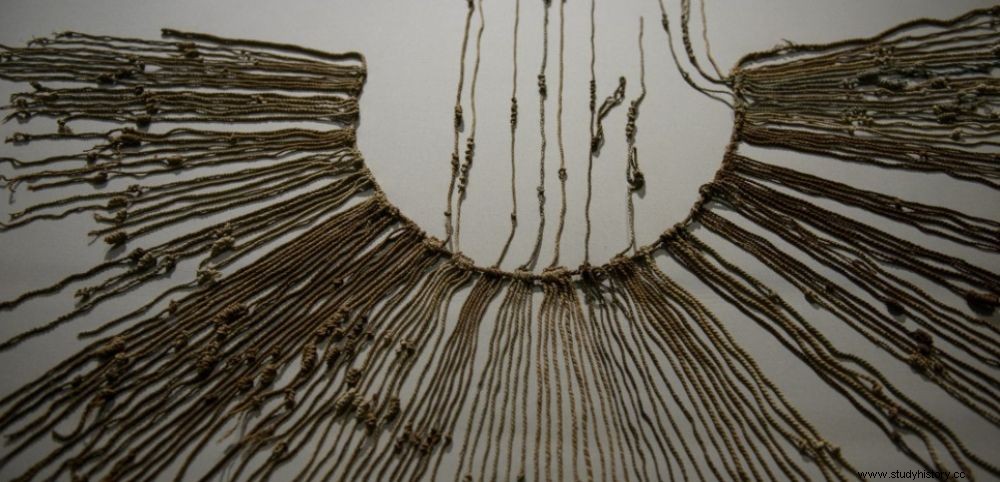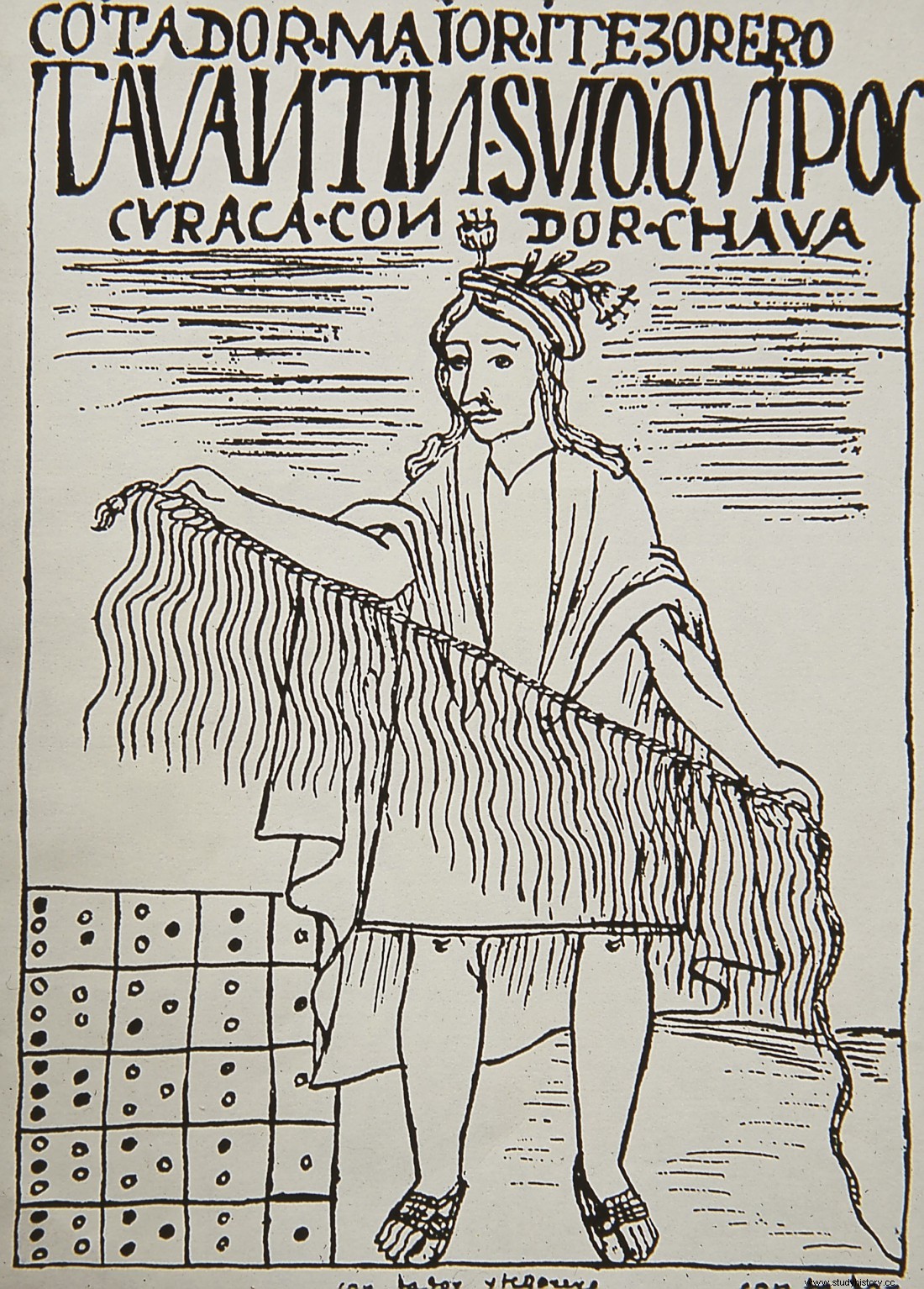 The quipus constitute a writing system using successions of knots, along cords, developed by Incas.
The quipus constitute a writing system using successions of knots, along cords, developed by Incas. COMMUNICATION. Rare are the knotted cords – the quipus ( knot, in Quechua language – have come down to us. The discovery of twenty-nine of them on the site of Incahuasi in the Canete Valley, 160 km south of Lima in Peru, therefore constitutes an exceptional archaeological event as explained to New York Times Gary Urton, one of the leading specialists in quipus :"They were found in a storage warehouse for agricultural products (…) in this city built in the 15th century." At the head of the Khipu Database Project, this researcher from the Department of Pre-Columbian Studies at the Dumbarton Oaks Institute of Harvard University (Cambridge, Massachusetts), has been trying for several years to unravel and decipher this skein of Inca remains. In the company of archaeologist Alejandro Chu, he tries to discover a "Rosetta stone" which would finally unravel the mystery of what seems to be an astonishing communication system.
They seem to have been used as account books"
Often depicted as a people without writing, the Incas had actually developed an ingenious system of communication using mnemonic devices:the quipus. It was a kind of necklace consisting of a main cord to which many hanging cords covered with knots were attached. According to a particular code of ligatures, these nodes would have allowed information to be stored. In Incahuasi, "they seem to have been used as account books to record the quantities of groundnuts, peppers, beans and corn that entered and left the city", continues Alejandro Chu. The Incas would thus have used it to assign values to series of arrangements of "knots" according to the type of raw material used to make the quipus (cotton or wool), the particular twist of the fibers or the appearance (front or back) ligatures. A codified use of colors also helped to make them readable.

The surest way to unveil this secret of the ancient Incas would, of course, be to find a translation of quipu . In 1542, for example, Indian caciques were assembled to perform readings while Spanish scribes noted down the translations. The chronicles of the time indeed report that only an elite, the quipukamayuq ("masters of the Quipu") was empowered to "read" these ligatures, which they strung between their fingers like a rosary. But these precious transcriptions were in turn victims of the atrocities of the Spanish conquistadors who, fearing that they contained idolatrous stories, had them systematically destroyed...
For now, Gary Urton has created a database where the 870 quipus are recorded. currently known and discovered in Peru and Chile. "The Incahuasi quipus, associated with agricultural information, may be easier to decipher than the others ", he confided. The researchers were indeed able to observe that the quipus attached to peanuts, peppers, beans or corn had distinctly distinct colors. Hence a color can be precisely attributed to one of the agricultural products... and these are the first words that would finally emerge from the night!
